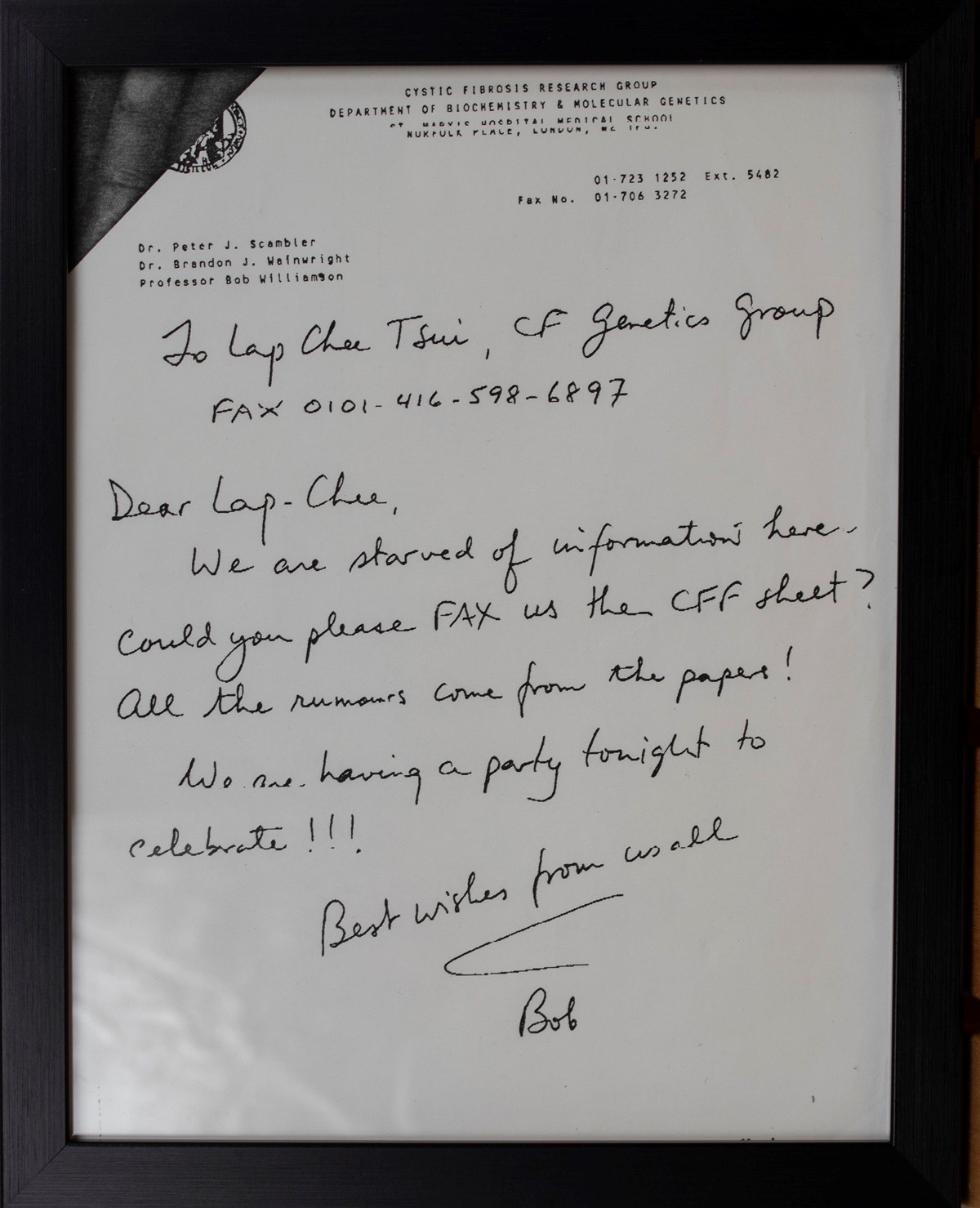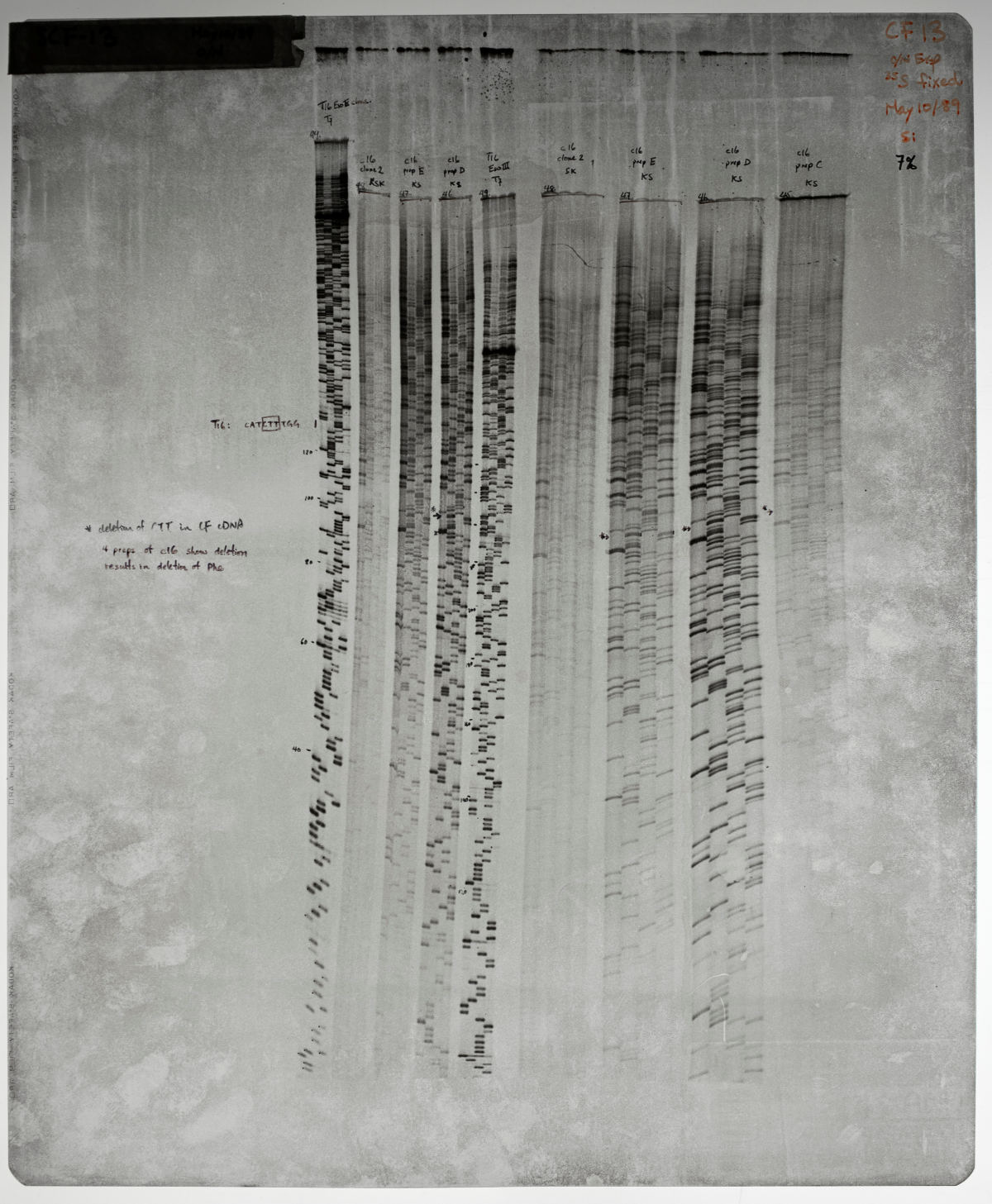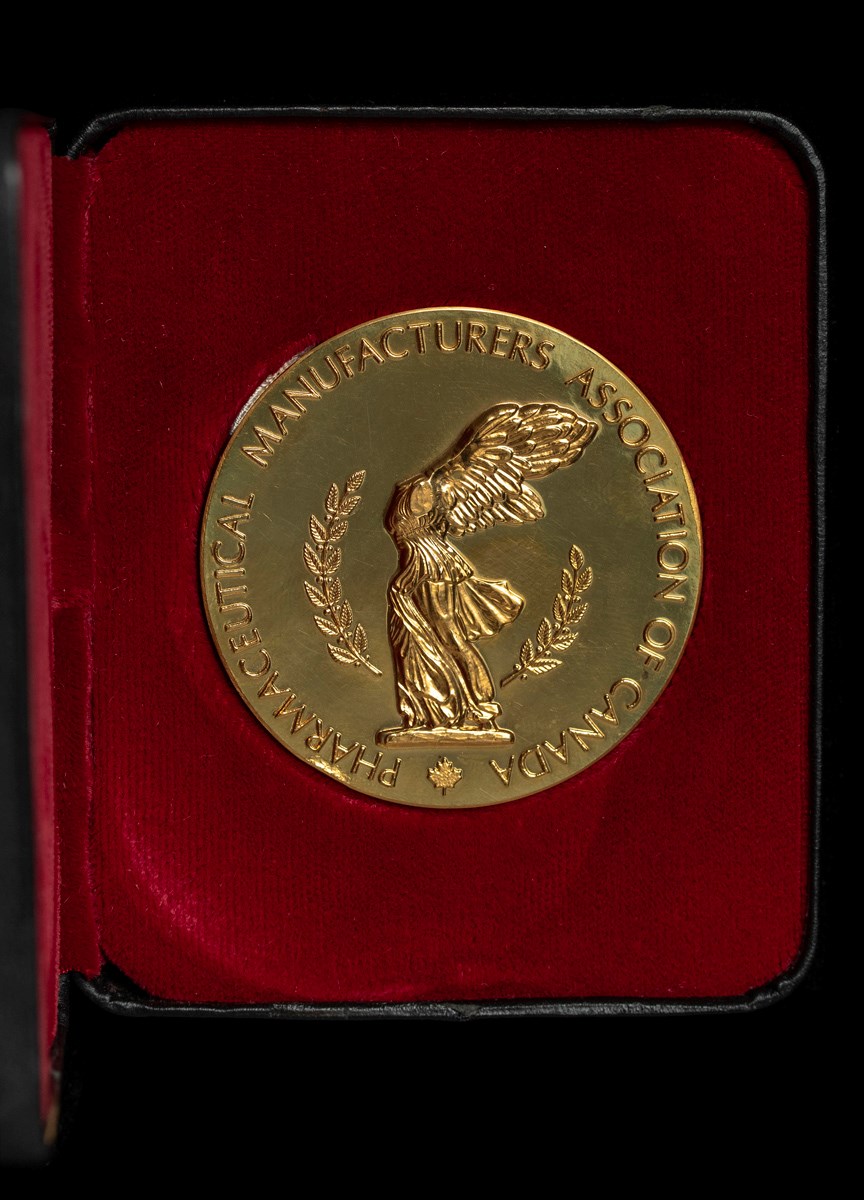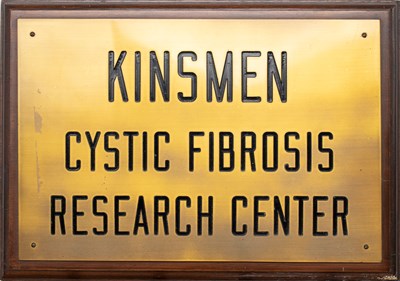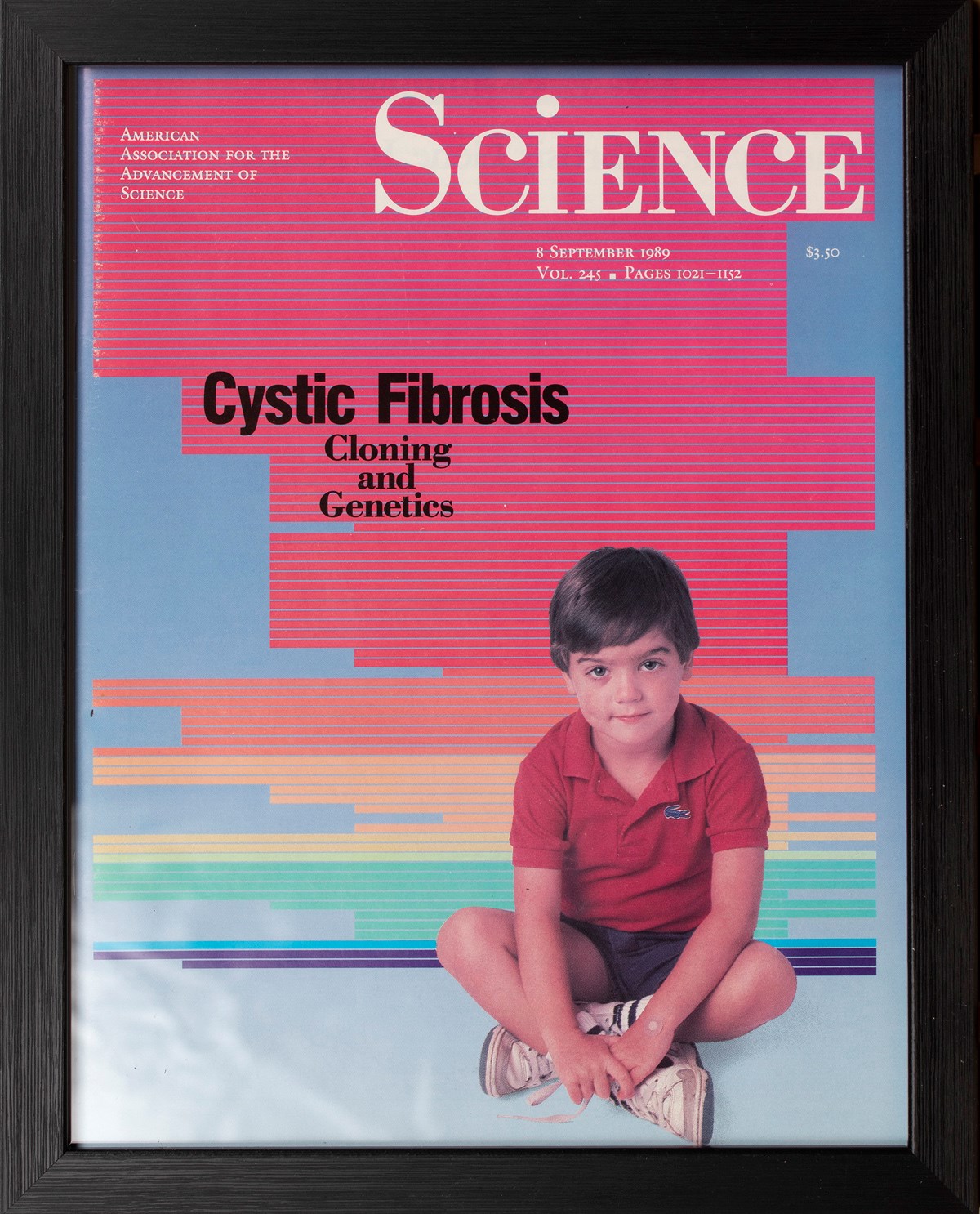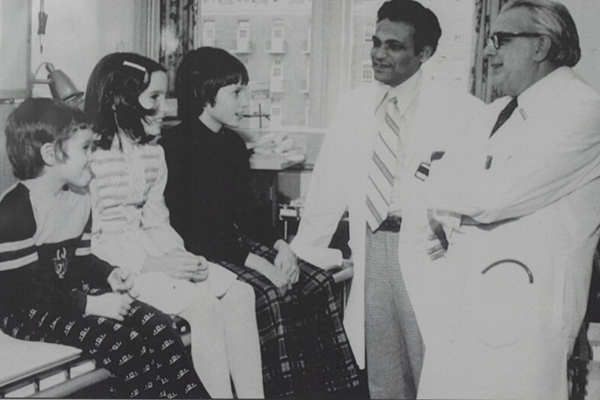
Discovery of the Cystic Fibrosis Gene
Facsimile from Bob Williamson to Dr. Lap-Chee Tsui
This is a faxed letter from Dr. Bob Williamson, who extended his congratulations to Dr. Lap-Chee Tsui and his team for their ground-breaking discovery of the cystic fibrosis transmembrane conductance regulator (CFTR) gene. Dr. Williamson’s laboratory in London, England was the major competing laboratory searching for the cystic fibrosis gene. The letter serves as a symbol of recognition and admiration for Dr. Tsui's accomplishment and emphasizes the profound impact it would have on cystic fibrosis research and patient care. At the time, it was also general practice to use DNA probes from the newly discovered gene for genetic testing assays and these were shared internationally often even pre-publication.
Gold medal
The Pharmaceutical Manufacturers Association of Canada's gold medal is a distinguished prize given to researchers whose work has the potential to improve the health and well-being of Canadians, and who have made substantial contributions to the development of novel drugs, therapies or technology. This award recognizes Dr. Lap-Chee Tsui and Dr. Jack Riordan’s discovery of the gene responsible for cystic fibrosis and the influence his work has had on understanding and treatment of this disease. The solid gold medal is one of many honours bestowed upon Dr. Tsui and Dr. Riordan and their teams in acknowledgment of his ground-breaking and lasting influence on scientific research.
Kinsmen Cystic Fibrosis Research Center plaque
Donated by Dr. Philip M. Sherman.
In 1974, Drs. Janet Forstner and Gordon Forstner were recruited to join the faculty of the Research Institute at SickKids by the late J. Richard Hamilton and Aser Rothstein to lead the Kinsman Cystic Fibrosis Research Centre.
The Centre received financial support from the Kinsmen Foundation, which was founded on February 20, 1920 as the Kinsmen Club (now known as Kin Canada) by Harold (Hal) Rogers. In 1964, the organization partnered with Cystic Fibrosis Canada to spark transformative and major advancements in cystic fibrosis research across the country.
The plaque acknowledging financial support of the Kinsmen Foundation was affixed to the wall adjacent to Drs. Janet Forster and Gorden Forstner's office space, located on the third floor of the Black Wing in what was then the Biochemistry Department at SickKids.
Dr. Janet Forstner studied the composition and functions of goblet cell-derived mucins present on mucosal surfaces, including the respiratory and intestinal tracts, which are excessively viscous and colonized by bacteria in those severely affected by cystic fibrosis.
The late Dr. Gordon Forstner led a new approach to cystic fibrosis-related research which brought together medical specialists and basic scientists to solve multidimensional problems. He trained and mentored the late Drs. Kevin Gaskin, Peter Durie, and Hinda Kopelman as physician-researchers. Together with biostatistician Dr. Mary Corey, this powerhouse translational research team employed carefully controlled and reliable exocrine pancreatic function testing to phenotype patients with cystic fibrosis and to define age-related changes in the exocrine pancreas function of children with Shwachman-Diamond syndrome.
The findings of the research program highlighted the importance of nutritional rehabilitation of affected patients, which served to improve their quality of life and lengthen their life expectancy. The large cohort of patients who were cared for at SickKids, and then included in a detailed longitudinal registry, set the stage for the seminal discovery of the gene and protein product altered in cystic fibrosis and in Shwachman-Diamond syndrome.
To support these research endeavors, the cystic fibrosis research team successfully secured long-standing extramural research funding from the Medical Research Council of Canada (forerunner to the Canadian Institutes of Health Research) and the Cystic Fibrosis Foundation of Canada (Cystic Fibrosis Canada).
We all benefited and can learn from these accomplishments and lasting legacies. Many thanks to the Kinsmen Foundation for their foresight in support of this initiative a half century ago.
Science journal
On May 9, 1989, Dr. Lap-Chee Tsui, a researcher at SickKids, along with his team including SickKids’ Dr. John R. (Jack) Riordan, Dr. Manuel Buchwald and Dr. Johanna Rommens, as well as Dr. Francis Collins at the University of Michigan, discovered the gene and protein responsible for cystic fibrosis, a hereditary disorder that affects the lungs, pancreas, and other organs. These three papers were concurrently published in Science on September 8, 1989, with the first paper accepted on August 17, and the second and third paper accepted on August 18.


